Giridhar Udupa
Giridhar Udupa literally grew up surrounded by percussion as his father Ullur Nagendra Udupa was a mridangist who taught extensively. At age 4, he started learning mridangam and learned that exclusively until the age of 9. Then, at a concert organized by his father, Giridhar was roped in to play the ghatam with a senior student who was playing the mridangam. The father trained the son for a month or two on the ghatam. After that concert, Nagendra told Giridhar to switch to the ghatam completely. From then on, whenever his father played the mridangam, Giridhar would accompany on the ghatam.
A version of this article appeared in The Hindu. Thanks to Sri. Giridhar Udupa for sharing media, including a previously unreleased live concert recording, for this page.
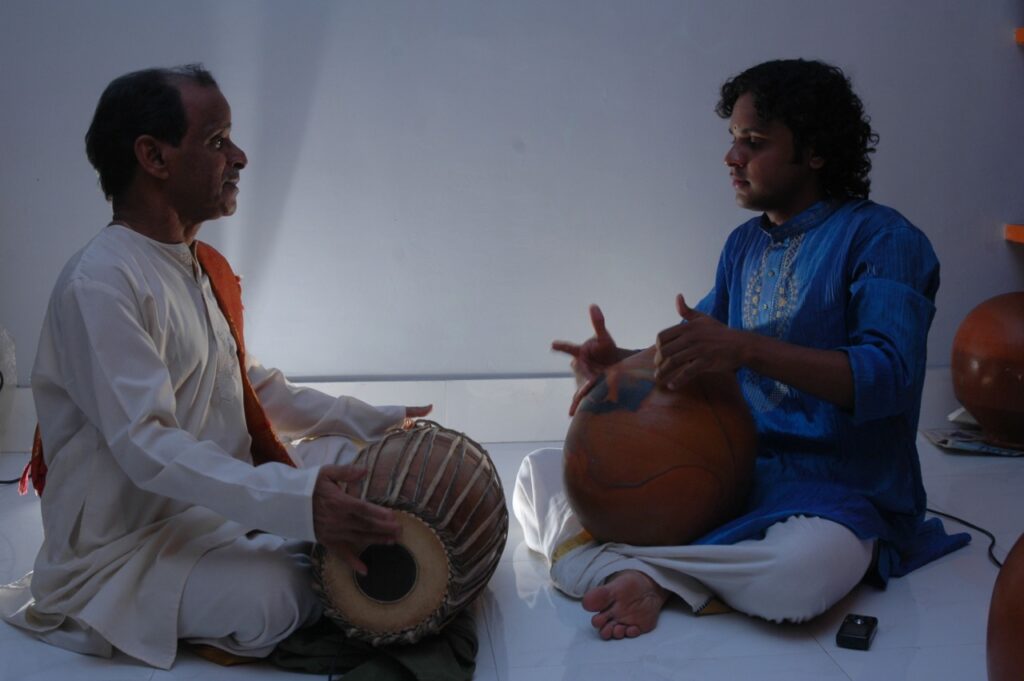
Giridhar was a naughty child whose mischievous streak continues to the present day (he freely admits that he has not spared even senior artistes of pranks “with all due respect, of course,” he adds, with an impish grin). However, he managed to juggle regular school with practice and playing cricket too. “It was a declining graph though. I was at 85% in 7th Std and by B.Com, had fallen to 60%.” His two elder sisters were devoted to academics and gold medalists all the way through. Giridhar says that he would have, at the most, spent an hour or two at practice those early years. His father had to call him in to do so frequently and as a normal, restless child, Giridhar would not stay absorbed in any one activity for too much time at once, cricket and several other distractions beckoning too.
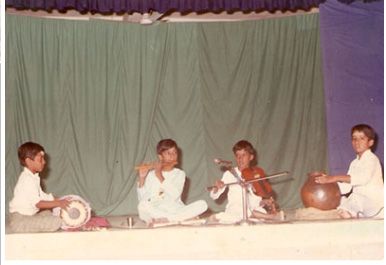
When he saw T.H. Vinayakram in action, he was fascinated. He found the technique unlike anything he had been aware of. His father being a mridangist, knew only a few ghatam-specific techniques. In 1998, a friend connected him to Sukkanya Ramgopal who lived in Bangalore – the senior most student of Vinayakram. “Then, my life began,” he says. “She taught me every technique and nuance I know.” It was complete relearning. “It took me over 6 months to just get the sound properly in the Manamadurai ghatam.” The biggest challenge was switching to that ghatam from the Bangalore ghatam he had used earlier. He explains. “The Manamadurai ghatam (industry standard now) weighs between 6-12 kg. The Bangalore ghatam would hardly be 2-3 kg. It is much thinner and lighter.” He would practice 6-7 hours daily to get used to it and to elicit the necessary sound and tonal quality on it.
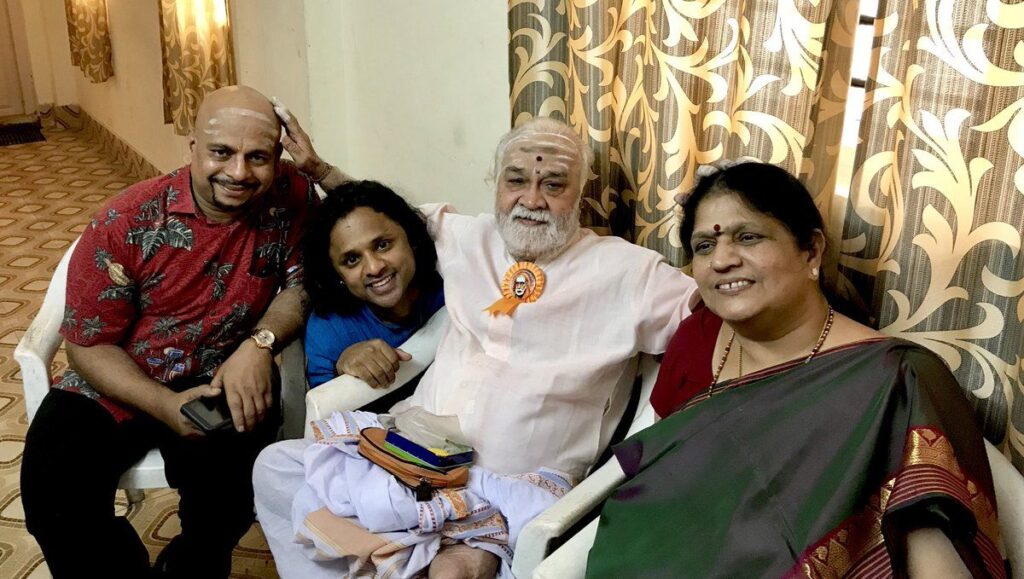
With prior concert experience, he had stamina and often spent entire days with Sukkanya. “I used to skip college to attend practice too.” His parents were fine with his taking up music as a career. In fact, my father wanted me to take up music professionally.” Around 2001, he received a CCRT scholarship through which he learned from V. Suresh. He had heard a recording of a Mylapore Fine Arts concert in 1997, where Suresh had played for Alleppey Venkatesan, with Srimushnam Raja Rao – “Suresh Sir’s playing for Sri subramaNyAya namaste in kAmbhOji really left me awestruck,” he says.
Suresh offered more dimension and perspective to Giridhar’s training, drawing his attention to more possibilities in sound texture. Giridhar played in a Mylapore Fine Arts Ghatam Mela with Suresh and all his disciples.
Giridhar’s first experience playing for the Mysore Brothers in Shivamoga in 2001 was one turning point. The Bangalore based organisation, Ananya, suggested his name to the brothers. “They looked at music very differently from what I had been exposed to until then. I have learned a lot from them, both musically and about life, humility and a lot more.” Mysore Dr. Manjunath (of the Mysore Brothers) is effusive in describing his association with Giridhar Udupa – “Our most memorable concerts usually included Udupa. His creative approach to percussion and sense of laya are outstanding, assuring the greater success of a concert. It does not take long to establish rapport on stage with Udupa.”

In 2002, Giridhar called on Dr. L. Subramaniam who was a neighbour. Subramaniam asked Giridhar to accompany him that very evening. He has subsequently played many programs with him. 2003 saw him go on his first tour to the United States – with Dr. Jayanthi Kumaresh, Ganesh and Kumaresh. Dr. Jayanthi says she knows Udupa from the time he was a young boy, noting his sensitivity to playing instruments, acquired from his father.
Discussing dynamics on stage, Giridhar admits that they do differ significantly based on whether co-artistes are seniors, equals or juniors. In the earlier days, some seniors have tried to suppress or dominate. He was also given instructions on how to play. He has been told to play less or play differently and sensed disquietude during his solos. Giridhar says he takes it all in stride. “One should respect elders no matter what. All one’s skill must be shown only in the playing. I do not compromise on what I play at all, no matter who is on stage, but I always maintain pakkavAdya dharma. While playing, it is important to keep in mind the audience and the overall music.” Was he always this way? “There was a period of time when ego would get in the way and I would get very angry,” he admits. “But now, that is no longer the case.”
Giridhar says that after so many years in the field, he has developed a good relationship with the senior artistes. He recollects the first time he was going to play with Karaikudi Mani – on September 2, 2015 (Dr. Jayanthi Kumaresh says Giridhar has a real knack for remembering dates and details). “It was like tapas. I hardly spoke for two months prior to that and, in the last week, did not speak at all – not even to my wife.” With younger artistes, and some friends, he takes some leeway to experiment.

“Umayalpuram Sivaraman Sir has said that I know where not to play,” he states by way of example. “We do not need to play throughout – the mridangam’s chAppu is sometimes fully sufficient.” Dr. Jayanthi observes that, of late, Giridhar is reacting more to the music, and the overall sonic experience, as against earlier when it was the tani Avartanam where he came to the fore. Dr. Manjunath says that the rapport on stage with Giridhar is instantaneous.
Giridhar has performed with many Hindustani musicians – “I grab a challenge with both hands. I have played with all the leading names in the genre (except for Zakir Hussain) and for pure Hindustani too as a replacement to the tabla. He mentions a concert in 2018 at the Gateway of India in Bombay where he played for Amjad Ali Khan. “I played like a tabla, with the traditional percussion solos in between. I played for a 19 beat tALam which, obviously, I could not see.” Another concert he mentions is with Anantha R Krishnan and Subhankar Banerjee. “I truly enjoy these explorations – anything that you enjoy becomes easier.” He credits his interest in Hindustani to playing with L. Subramaniam on jugalbandi-s.
Giridhar also engages in collaborations galore. In 2004, he went to Europe to play with a flute player who was learning from Dr. L. Subramaniam and Hariprasad Chaurasia. This was his first exposure to any genre other than Indian Classical Music. In 2005 he was invited to a big percussion festival in Krakow, and he visits that country regularly now. “It is a second home for me.”
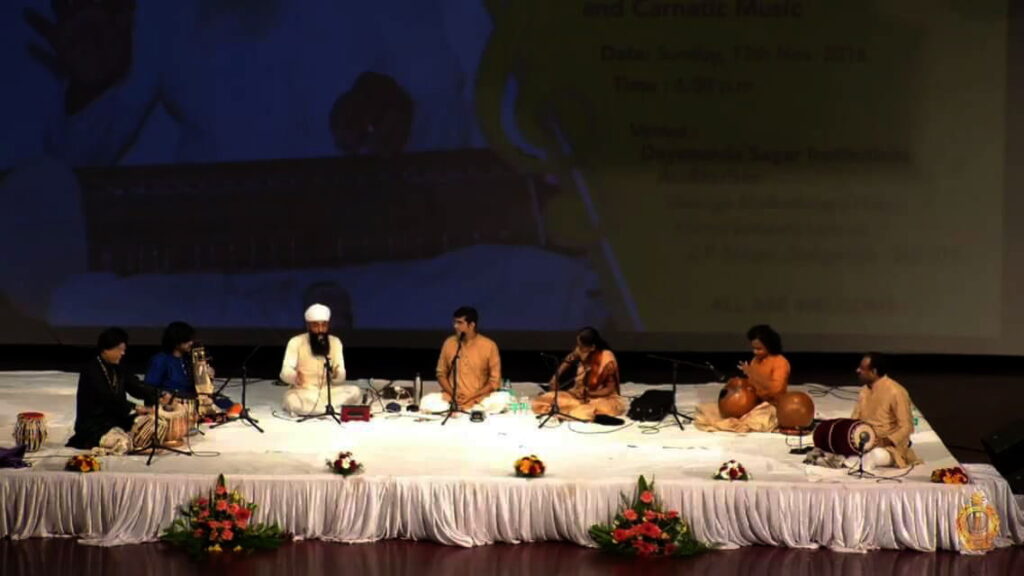
He does a lot of cross-genre associations – he has played for flamenco in Andalusia, started a band called IndiaLucia with a Polish flamenco guitarist, featuring flamenco dancers, the cajon, the bass guitar and even the flute on occasion. He is part of another band called Saagara in Europe and the Bangalore based Layatharanga group which features five core musicians and four guest musicians. Mysore Manjunath says, “With Layatharanga, Udupa has clubbed chaste Carnatic music with very innovative, contemporary musical ideas.” Giridhar teaches in India and abroad and says he prefers in-person classes. He starts from the basics and when he is on travel, his senior students teach on his behalf. “All my lessons are written down.” Prior to the lockdown he had been concerned that not many of the next generation would take to the ghatam in Bangalore and Karnataka, but “now, many are interested,” he says.
Giridhar started the Udupa Foundation in 2015. The spark was ignited when he was in Poland in 2007 for a major music festival. He saw CDs of all types of world music there – however, the only Indian music there was Hindustani. He was touched to the quick. He wanted Carnatic to be recognized too. “The tabla is known by all, but not our traditional Carnatic instruments.” At around that time, his father’s health began deteriorating, the onset of dementia. Nagendra Udupa stopped playing in 2012. He recognizes no one now. “My father was traditional and stayed within the confines of Carnatic and Karnataka. But he gave me full freedom to explore. His approval meant everything to me.” He says that his father lived a very simple life. “Like a rishi. Even if he was not paid, he never took it personally.”
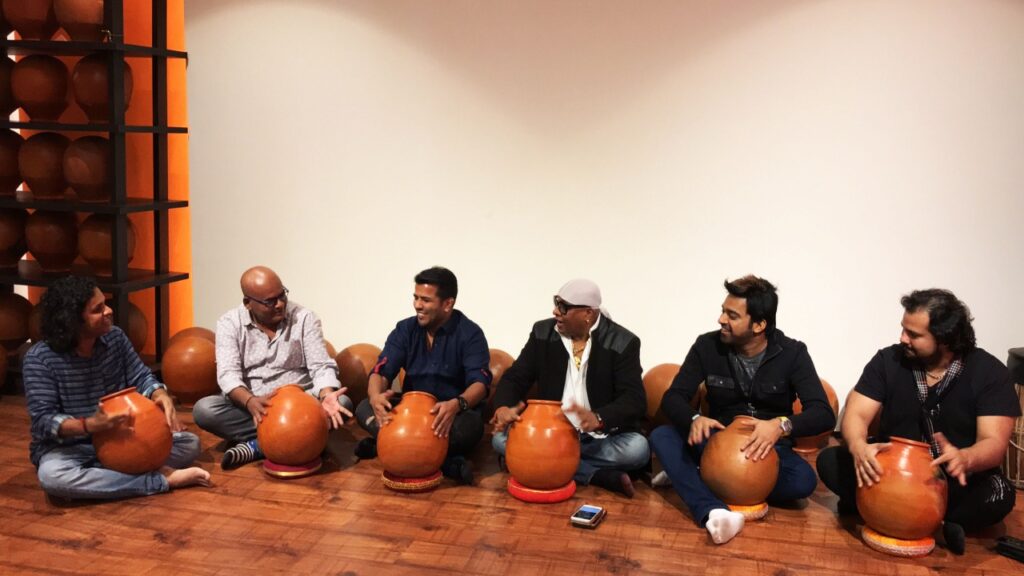
Giridhar thought he should take music to others like his father, who were unable to travel. He called leading artistes to be on the advisory board of the Udupa Foundation, requesting their blessing for his endeavor. He established his flagship Udupa Festival as a fundraiser for this cause. Carefully curated, the Udupa Festival features showstoppers, often one Carnatic, one Hindustani and one fusion program, with sponsors galore and premium tickets. The funds from this event defray the costs of the 1-4 free concerts per month he organizes with artistes of his generation, targeted at the differently abled, the aged and others. Participating artistes are remunerated at sabha rates, he says. Mysore Dr. Manjunath and Dr. Jayanthi Kumaresh both applaud Giridhar’s activities and efforts at reaching out to society with the Udupa Foundation.
Dr. Jayanthi recognises his ability to straddle multiple genres saying, “What he plays is not what he has learned but what he has absorbed in his journey – so many patterns, sound textures, climaxes – he knows how to play to reach out to the audience. He has put the ghatam on the world map.”
There is a physical toll from ghatam playing. He takes simple food and does yoga when possible. While he plays only the ghatam for Carnatic and Classical genres, he also plays morsing and konakkol for fusion programs, besides other ethnic percussion instruments. He also listens to a lot of recordings, and stresses that attending live concerts is critical for musical development regardless of how many recordings one might attend.
With so much global travel, Giridhar has made a custom-made fiberglass case to carry his ghatams carefully in checked-in baggage itself. He checks on their condition as soon as he arrives at his destination. He has also placed some 30 ghatams around the world, many in Europe, lessening the burden during travel.
Giridhar has a keen business acumen – “I learn non-musical aspects from everyone I see.” Dr. Jayanthi underscores this aspect. “Many get opportunities. What they make out of these opportunities is what is different – Udupa has internalized all aspects – how artistes behave, travel, talk, plan, everything. He has had a meteoric rise, with his ability to interact with people and reach out to them.”
Giridhar says that the remuneration schemes have to change. “I am more of a solo performer and can command fees like one which is why I can survive. I am not completely dependent on sabha-s. However, the next generation might not take ghatam as a career. On foreign tours, upapakkavAdyam-s rarely get a chance.” He thinks the entire community must work like a big family and look out for each other.